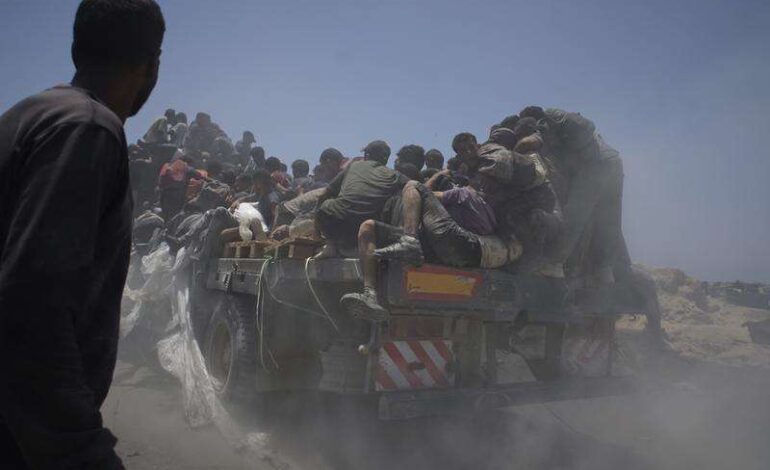Urgent Aid Stuck at Gaza Border Amid Rising Famine Risk

UPDATE: The humanitarian crisis in Gaza is escalating, with the United Nations warning that Palestinians are at risk of famine as hundreds of truckloads of aid remain stranded at the border. Israeli military officials confirm that aid is ready to enter, yet distribution is stalled due to logistical challenges and security concerns.
New reports from the U.N. indicate an alarming increase in malnutrition-related deaths among the population. 79 Palestinians were killed this week while attempting to access aid, according to Gaza’s health ministry. Journalists were taken to the Kerem Shalom crossing on Thursday, where they witnessed hundreds of aid boxes waiting for distribution.
Why can’t the aid be delivered? The U.N. cites a combination of unsafe routes, bureaucratic red tape, and military restrictions that hinder their operations. Aid trucks must navigate zones controlled by the Israeli military, often facing delays of up to 20 hours just to reach those in need. In many instances, desperate crowds overwhelm the convoys, leading to tragic incidents where Israeli troops have opened fire, exacerbating the already dire situation.
“Taken together, these factors have put humanitarian staff at grave risk,” stated Olga Cherevko, spokesperson for the U.N. Office for the Coordination of Humanitarian Affairs (OCHA). The chaos surrounding aid access has led to a suspension of operations on several occasions, leaving thousands without critical supplies.
Israel’s military contends that it has permitted approximately 4,500 aid trucks into Gaza since lifting a blockade in May, averaging around 70 trucks per day. However, this is significantly lower than the several hundred trucks the U.N. claims are necessary daily to meet the urgent needs of the population.
In response to the accusations, Israeli officials assert that they do not limit the number of aid trucks entering Gaza. Col. Abdullah Halaby, a leading figure in COGAT, the Israeli military agency, stated, “We encourage our friends from the international community to collect and distribute humanitarian aid to the people of Gaza.”
Despite these assertions, U.N. officials report that over half of their movement requests—506 out of 894—were either denied or impeded from May to July. The military’s frequent changes to truck routes further complicate matters, as many of these paths are deemed impassable or dangerous.
The collapse of Gaza’s Hamas-run police force has contributed to a breakdown of law and order, creating an environment rife with looting and violence. The U.N. argues that the best way to protect aid convoys is to ensure a consistent flow of supplies, which would reduce the desperation that leads to chaos and violence.
“We are asking for community buy-in to ensure that trucks will come every day,” emphasized U.N. spokesperson Stephane Dujarric. The humanitarian community believes that regular deliveries will help curb looting and restore order.
As the situation continues to develop, the U.N. and humanitarian organizations are calling for immediate action to facilitate the delivery of aid to those in desperate need. The world is watching as both sides navigate the complexities of this humanitarian crisis.
Stay tuned for updates as this story unfolds.






